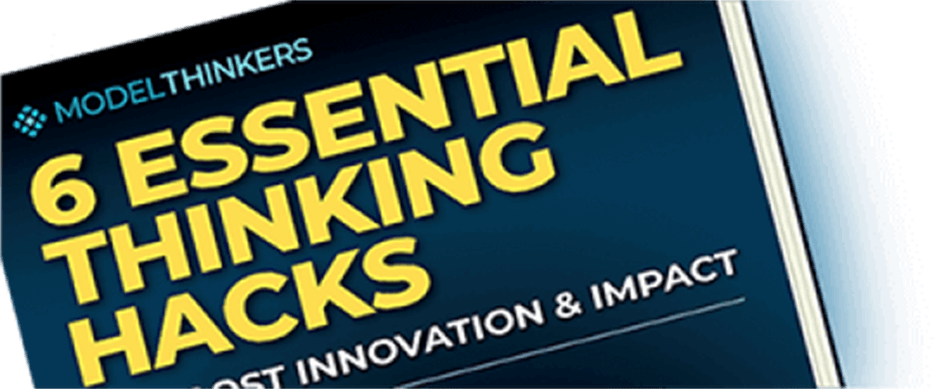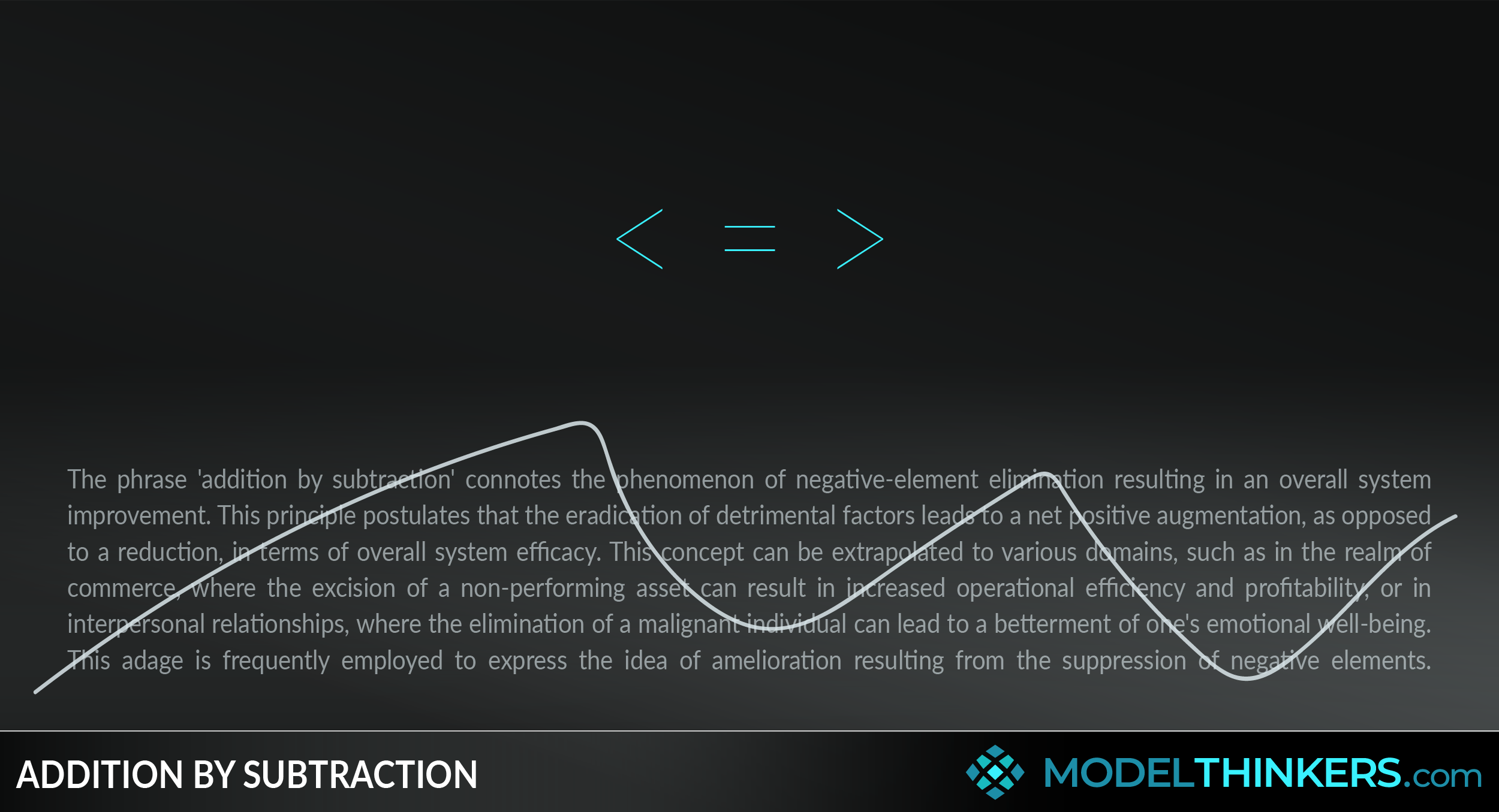Addition by Subtraction
Commonly used in art and sport, but just as relevant for product design, UX, architecture, entrepreneurship, personal development, and almost anything, this concept challenges traditional perceptions of progress.
Addition by Subtraction recommends removing, rather than adding elements, to achieve greater value and impact.
COUNTER-INTUITIVE & POWERFUL.
When faced with a problem, we typically ask what can we add, build, buy or increase to solve this. Addition by Subtraction is counter-intuitive but a common approach that is sometimes framed as ‘less is more’, or Via Negativa. Hans Hoffman, painter and artist, captured the motivation behind it when he said: “The ability to simplify means to eliminate the unnecessary so that the necessary may speak.”
GETTING STARTED.
It can be hard to consider subtraction, given our cultural obsession for growth and delivering the 'new'. If you're wanting to embed this more into your approach, next time you face a challenge try asking some of these questions:
“What’s really important here and what’s unnecessary noise and distraction?”
“What’s the essential element that we really need to deliver and how can we divert more resources to it?”
“How might we deliver more value if we reorganise, reprioritise, or repurpose what we have?
“How might we simplify this situation?”
“What else might we remove and what would be the impact of that?”
“What if I only had 20% of what I have now to solve this, what would that be and how would that look?”
A quick warning though, not everything will benefit from subtraction. See Limitations below for more.
APPLY TO IT ALMOST ANYTHING.
This concept is used by sport coaches who are looking to find new chemistry in their teams, it was popularised by Marie Kondo who challenged us to only keep things that ‘sparked joy’, and was even part of how Google’s bare basic UX trumped its competitors.
More recently, you’ll see increasing references to Addition by Subtraction in the overlapping movements of Minimalism, which focuses on simplicity and living with less, and Essentialism, which focuses on identifying what’s truly important to you.
Some of the ways you might want to apply this versatile concept include in:
Sport, by removing talent or simplifying the training process to achieve greater results.
Art and architecture, by providing space and the lack of elements to make a bigger impact with what’s left.
Personal development, by simplifying the pressures, expectations, things and even people in your life so you can focus on what’s really important to you.
Health, rather than focusing on what you are doing and should eat, identify key things to stop doing and remove from your meals e.g. cutting out processed foods to smoking.
Writing, Hemingway was said to write 'more with less' and applied simple brevity to his writing.
Investment, by rejecting Diversification and focusing investments based on your Circle of Competence.
Business, by streamlining your product range and presenting a clearer, more targeted value proposition.
Learning, by using techniques such as the Feynman Technique to focus on the core ideas that need to be learnt.
Design and engineering, by reducing elements with the knowledge that every new line of code, circuit, or base element of your design is another element that must be maintained and is a potential failure point.
Focus and attention, Cal Newport is a strong advocate for Deep Work by reducing social media and digital distractions.
IN YOUR LATTICEWORK.
Addition by Subtraction is supported by the Paradox of Choice which warns against overwhelm of options and Opportunity Costs which is a reminder that we have finite resources and time. The concept also has links with the Pareto Principle and the Law of Diminishing Returns, which encourages focusing on high-value returns rather than on everything.
Once you are committed to the concept, you might consider a variety of prioritisation techniques including the Impact & Effort Matrix, RICE Score, or the MOSCOW Method.
When applying the concept it also pays to be aware of Functional Fixedness, and the opportunity to use what you already have in different, innovative ways rather than adding more. Finally, explore Warren Buffett’s approach as a case study of this concept, with Buffett’s Two List representing a practical way to apply it to your priorities and Buffett’s application of Circle of Competence driving a focused rather than a diverse investment strategy.






